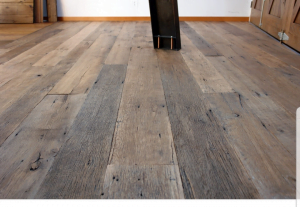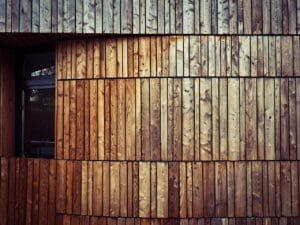
Combining Reclaimed Wood Flooring with Other Natural Materials
Natural materials have a timeless appeal – they bring warmth, authenticity, and a sense of calm that synthetic alternatives simply can’t replicate. Reclaimed wood flooring

Choosing the right flooring is about more than just appearance – it’s an investment in your home’s value, durability, and character. Among the most popular options, reclaimed wood and engineered wood both promise style and performance, but they differ greatly in origin, longevity, and environmental impact. Understanding these differences can help you decide which material truly offers the better return on your investment – financially and aesthetically.
When choosing new flooring, homeowners and designers alike often find themselves deciding between reclaimed wood and engineered wood. Both options offer unique benefits, aesthetics, and environmental credentials – but they differ significantly in terms of cost, durability, and long-term value.
Reclaimed wood is sourced from old barns, factories, and historic buildings, then carefully restored for reuse. Each plank tells a story, featuring natural weathering, nail marks, and patina that cannot be replicated. It’s authentic, sustainable, and adds instant character to any space.
Engineered wood, on the other hand, is a modern alternative made by bonding layers of real wood veneer over plywood or high-density fibreboard (HDF). This construction makes it more dimensionally stable and often easier to install. Engineered flooring offers the beauty of real wood at a typically lower upfront cost.
But when it comes to investment, financial, aesthetic, and environmental, how do they truly compare?
At first glance, engineered wood flooring usually comes with a lower price tag than reclaimed wood. It’s mass-produced, readily available, and quicker to install – making it appealing for projects with tight budgets or timelines.
Reclaimed wood, however, is a premium product. Each batch must be sourced, cleaned, denailed, milled, and treated, all of which contribute to its higher price point. Yet, this investment often pays off. Because reclaimed timber is made from old-growth wood, it tends to be denser and more durable than most new wood products.
Over time, reclaimed flooring can actually increase the value of a property, especially in heritage homes or high-end developments where authenticity is prized. Engineered flooring, while attractive and cost-effective initially, may need replacement sooner – particularly if the wear layer is thin and can’t be sanded multiple times.
Verdict: Engineered wood wins on short-term affordability, but reclaimed wood often delivers greater long-term value.
Durability is a critical factor in determining whether reclaimed wood or engineered wood is the smarter investment.
Reclaimed wood flooring is typically made from mature, slow-grown timber that has already proven its strength over decades, or even centuries, of use. Once refinished, it can withstand heavy foot traffic and last for generations with proper care. Its natural imperfections actually help to conceal wear and tear, making it a great choice for busy homes or commercial spaces.
Engineered wood flooring offers stability benefits due to its layered construction. It’s less prone to warping or expanding with changes in humidity compared to solid wood. However, the surface layer determines its longevity. High-quality engineered floors with thick top veneers can be sanded and refinished several times, but thinner versions may not offer that flexibility.
Verdict: Reclaimed wood takes the edge for sheer lifespan and robustness, while engineered wood excels in environments prone to moisture or temperature fluctuation.
There’s no denying that both options look stunning – but the appeal comes from very different places.
Reclaimed wood brings warmth, history, and individuality. No two planks are alike; each has unique grain patterns, knots, and colour variations. Its lived-in character instantly adds depth and authenticity to interiors – from rustic farmhouses to contemporary lofts. Designers often use it to create focal points, feature walls, and bespoke statement floors that tell a story.
Engineered wood, meanwhile, offers consistency. Because it’s manufactured, you can achieve a uniform finish and colour across large spaces – ideal for modern or minimalist interiors. It also comes in a wide variety of finishes, from light oaks to dark walnuts, often pre-finished for convenience.
Verdict: Reclaimed wood wins for character and individuality, while engineered wood offers control and uniformity in design.
As sustainability becomes a top priority for homeowners, reclaimed wood is one of the most eco-friendly flooring options available. It repurposes existing materials, reducing waste and the demand for new timber. Using reclaimed wood also prevents old structures from ending up in landfills, giving historic materials a second life.
Engineered wood can also be sustainable – especially when it’s made using FSC-certified sources and low-VOC adhesives – but it still requires new timber for the veneer and energy for manufacturing. While some brands use recycled cores, the overall carbon footprint is generally higher than reclaimed alternatives.
Verdict: Reclaimed wood is the clear winner in sustainability and environmental stewardship.
When comparing reclaimed wood vs engineered wood, both offer practical and aesthetic advantages. Engineered flooring is more affordable upfront, easy to install, and ideal for modern builds or spaces with fluctuating humidity.
However, reclaimed wood stands out as the better long-term investment. It’s more durable, eco-friendly, and full of unique charm that adds lasting value to a property. Its timeless character and historical appeal make it a choice that not only endures – but improves with age.
If you’re seeking flooring that tells a story, enhances your home’s value, and contributes positively to the planet, reclaimed wood is the investment that keeps on giving.

Natural materials have a timeless appeal – they bring warmth, authenticity, and a sense of calm that synthetic alternatives simply can’t replicate. Reclaimed wood flooring

Some design trends come and go, but the beauty of natural materials, especially wood, never fades. Reclaimed wood flooring, with its rich tones, subtle imperfections,

Restoring a period home is as much about sensitivity as it is about style. Every beam, cornice, and doorframe tells a story – and your

Reclaimed wood is one of the most sought-after materials in home renovations, not just for its rustic charm and sustainability, but also for its strength